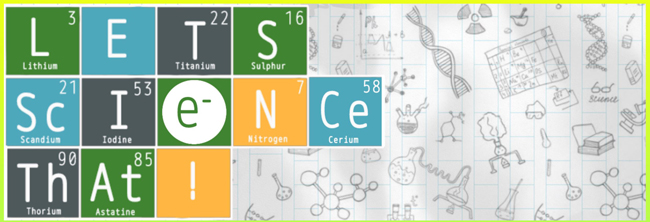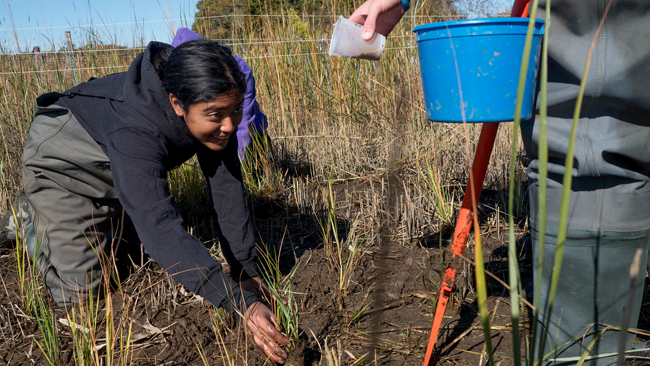
"Let’s Science That!" engages the public in scientific research conducted by the Brentwood High School research students.
— By Dr. Rebecca Grella and Kristina Terrana
Stony Brook, NY, May 29, 2020 - Brentwood, located on Long Island, NY, has been one of the hardest hit communities by the coronavirus (COVID-19).
The Brentwood Union Free School District, which services approximately 19,000 students, is the largest suburban school district in New York State.
In response to our distance learning initiative put forth by the State and the district, Brentwood research students devised a platform to take their research virtual through the development of the “Let’s Science That!” platform.
Having a voice in science is critical, and as a mechanism to have their science research heard, the students developed the “Let’s Science That!” platform.
“Let’s Science That!” showcases the scientific efforts of the students to the local community and the world. This student-driven platform—from the website to social media accounts including Facebook, Twitter and YouTube—highlights independent research investigations conducted by research students in grades 10-12 at Brentwood High School.
This multidisciplinary venue has granted students the opportunity to create and share their research of emerging relevance through podcasts, video and art.
As seen in this video from the project's YouTube channel, “Let’s Science That!” gives students a voice - from podcasts to artwork, these young scientists are showcasing their talents during these unprecedented times. "This is the student's response to distance learning efforts in science research in the age of the COVID-19 pandemic," said Rebecca Grella, Ph.D., Brentwood Union Free School District. "The students wanted to showcase their research and artistic efforts and have their voices heard."
"'The Let’s Science That!' site gives me the opportunity to share my work with invasive plants with not only the community, but the world," said student Amber Connell, who investigates the invasive species Japanese Knotweed.
Rosemary Moran, a student who conducts salt marsh research, added, "'Let’s Science That!' is a platform where Brentwood High School students work to help improve decisions made by the communities, businesses and younger generations," said "The importance of science is shown through the promotion of possible resolutions to pressing environmental issues."

Brentwood research student Isabella Seda in the Sunken Meadow salt marsh where she conducts her research on nitrogen issues. Credit: Rebecca Grella.
"'Let’s Science that!' gives students the opportunity for students to be more than just students, but scientists and teachers," said student Adrian Rivera.
Tune into “Let's Science That!” on our website, for a thought-provoking series of student-driven podcasts on topics of emerging relevance.
On YouTube: From Small Grant to Solve for Tomorrow to Science-ing That
The "Let's Science That!" Website is an offshoot of "No Child or Teacher Left Inside," a recent project of the Brentwood and Smithtown West students.
It's one of six "2019 Marine Small Grants Projects" provided via New York State Department of Environmental Conservation (NYSDEC) and New York Sea Grant (NYSG). In addition to having helped educate students, these grants have enhanced fishing access for people of all abilities, and improved fisheries data collection to enable more New Yorkers to enjoy the state’s diverse marine resources.
The students' experiences during "No Child or Teacher Left Inside," coupled with laboratory efforts, led Brentwood School District students to compete in the 2019-2020 Samsung Solve for Tomorrow competition, for which they were one of 100 state finalists and garnered $15,000 in prizes from Samsung.
The student research team investigated methods to curb salt marsh erosion using guar and Xanthan gum, naturally occurring food additives.
Solve for Tomorrow challenges students in grades 6-12 to show how Science, Technology, Engineering and MATH (STEM) can be applied to help improve their local communities.
More Info: Marine Small Grants
This project was supported by a partnership between New York Sea Grant, the New York State Department of Environmental Conservation, and the Marine and Coastal District of New York Conservation, Education, and Research Grants Program.
Funding is supported from the Marine and Coastal District License Plate which is administered by the Marine and Coastal District of New York Conservation, Education and Research Board, and authorized through NYS Environmental Conservation Law Article 13, Title 5 Section 13-0503. Any opinions, findings, and conclusions or recommendations expressed in this publication are those of the authors(s) and do not necessarily reflect the views of New York State Department of Environmental Conservation, Stony Brook University or New York Sea Grant.
More Info: New York Sea Grant
New York Sea Grant (NYSG), a cooperative program of Cornell University
and the State University of New York (SUNY), is one of 34 university-based
programs under the National Oceanic and Atmospheric Administration’s
National Sea Grant College Program.
Since 1971, NYSG has represented a statewide network of integrated
research, education and extension services promoting coastal community
economic vitality, environmental sustainability and citizen awareness
and understanding about the State’s marine and Great Lakes resources.
Through NYSG’s efforts, the combined talents of university scientists
and extension specialists help develop and transfer science-based
information to many coastal user groups—businesses and industries,
federal, state and local government decision-makers and agency managers,
educators, the media and the interested public.
The program maintains Great Lakes offices at Cornell University, SUNY
Buffalo, SUNY Oswego and the Wayne County Cooperative Extension office
in Newark. In the State's marine waters, NYSG has offices at Stony Brook
University in Long Island, Brooklyn College and Cornell Cooperative
Extension in NYC and Kingston in the Hudson Valley.
For updates on Sea Grant activities: www.nyseagrant.org has RSS, Facebook, Twitter, and YouTube links. NYSG offers a free e-list sign up via www.nyseagrant.org/nycoastlines for its flagship publication, NY Coastlines/Currents, which is published quarterly. Our program also produces an occasional e-newsletter,"NOAA Sea Grant's Social Media Review," via its blog, www.nyseagrant.org/blog.